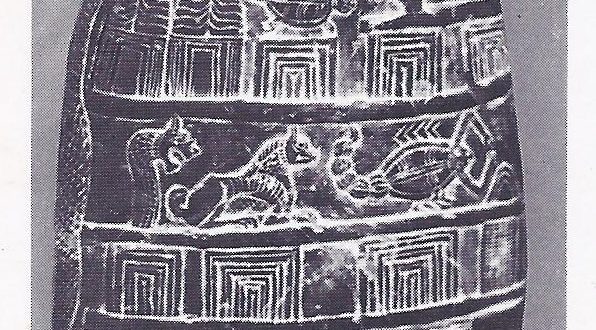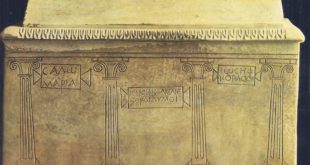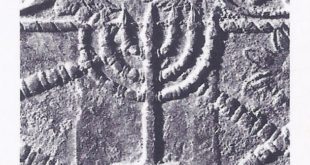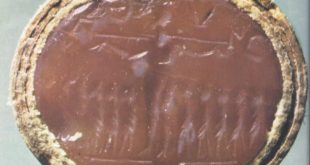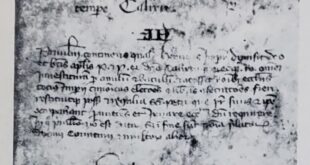Hittites, a new power, arises in the Near East and Babylon is eclipsed. The Babylonian kings who followed Hammurabi were unable to hold the wide territories that he had won. New enemies challenged the supremacy of Babylon in Mesopotamia; the south broke away and a new kingdom came into being, the dynasty of the Sea Land, with its centre in the marshy region around the head of the Persian Gulf. The Babylonian army was more than once defeated by the Cassites, a mountain people from the region now known as Kurdistan. In the northwest, the Mari region regained independence. From the encircling highlands, barbarian newcomers were pouring into the semicircle of river valleys and urban settlements known as the Fertile Crescent. The ethnic map of the Near East was undergoing the first of a series of violent changes, perhaps the most far-reaching of all in its effects on the history of man.

Cosmic Order
A motif that recurs in the mythology of many ancient peoples is that of the emergence of order from disorder, of cosmos out of chaos. This is the theme of the creation legends of Mesopotamia and of Egypt. The concept of cosmic order, which the gods bring about and which mankind is concerned to maintain, is present in many ancient literatures. It implied the taming of the forces of nature, storm, fire and flood; and the defense of civilization against dangers from without. These dangers were ever-present, for throughout the whole of the ancient period and for many centuries afterwards, the areas of civilization were islands in a vast ocean of barbarism. To appreciate society and to understand its history, we must know something of this great hinterland of barbarian peoples, for their periodic incursions often constituted milestones of deep historical importance.
The civilized world of the ancient Near East was surrounded on all sides by barbarian lands that seemed, to stretch to infinity. Of their peoples, only a fraction on the borderlands was known. South and west of Egypt extended the whole continent of Africa. Egypt, owing to her geographical isolation, was not greatly troubled by the invasion of other African peoples. The situation was very different for the peoples of Western Asia. Northwards and eastwards lay the vast steppe-land of Central Asia. The population of this huge expanse, though relatively sparse to the land over which they ranged, constituted an ever-present threat to the agricultural peoples of the more favoured territories around the Fertile Crescent.

As a result of archaeological research, particularly in what used to be the U.S.S.R., a certain amount is now becoming known about the inhabitants of this vast and hitherto little-known territory. It would appear that in Siberia and Mongolia a Palaeolithic economy, based on hunting, continued long after the rise of civilization in Western Asia. With the development of agriculture in areas that bordered on the steppeland, a mixed economy evolved, embracing both the growing of crops and herding of animals; since they did not practice irrigation and water was scarce, they grew and harvested cereal crops after the season of rain and then moved on with their herds, seeking pasture over a wide range. This pattern of existence may be described as nomadic. At Tripolye, near Kiev, however, and at other sites in the Ukraine and eastern Rumania, remains of the settlements of stone-using agriculturalists have been found, dating to the third millennium B.C. They were not nomads, for they lived in large houses built of timber and clay, had domesticated goats, cattle and dogs. The bones of horses also have been found in their settlements and this is possibly the earliest evidence of the domestication of this friend of man.
A New Weapon is Introduced by Hittites

Now in the Mari letters and other documents of about the same date, there occur some names which are neither Sumerian nor Semitic. These names betray the presence of a new element in the population. The horse, too, makes its first appearance in the Near East, as a rare and precious gift sent by ruler to ruler. Usually two horses are mentioned and it is evident that they were used in pairs as draft animals, to draw a new and revolutionary form of vehicle: the light war chariot. The Sumerians had used chariots to great effect in battle, but they were heavy, clumsy affairs with solid wooden wheels, pulled by teams of the wild sort of asses, known as onagers, which are now extinct but once roamed the Syrian desert.

From pictures of these Sumerian chariots in action, it can be seen that they must have thundered forward in a straight line, like a kind of tank, carrying two or three warriors with spears leveled, mowing down the enemy and spreading panic. The new chariots were quite different: very light, with spoked wheels and built for speed. The military effectiveness of horse-drawn chariotry was quickly appreciated by those who suffered its onslaught and it soon became an essential weapon of offense in every western Asiatic army. Its introduction is to be attributed to the newcomers, whom we know as the Hurrians, the Cassites and the Hittites.
The Hittites
The Hittites were the first to settle. Originally nomads with no knowledge of writing, they arrived in Anatolia at the end of the third millennium or the beginning of the second and by about 1900 B.C. had begun to overrun eastern Turkey and to impose their rule on the native Hattians. During the following century they spread northwards and about 1650 B.C. made the hilltop fortress of Hattusas (modern Boghazkoi), in the bend of the river Halys, their capital. By this time they had adopted the cuneiform script of Mesopotamia and the first historical texts date from this period (known as the Hittite Old Kingdom).

The language of the Hittites of Hattusas is one of the Indo-European group of languages; that is to say, that though very different from Greek and Latin, the Germanic languages and Sanskrit, it is basically akin to all these. Compare for instance the Hittite word kuis (“who”) with Latin quis; watar, which in Hittite means water; and mekkis (“great”) , which is like the Greek megas. The case endings of nouns and the inflection of verbs are also similar to those in various Indo-European languages. The Hittites, too, were great horse-breeders: it is interesting to find among the tablets from Boghazkoi a treatise on the training of horses which is ascribed to a Hurrian expert in such matters and which uses technical terms most nearly paralleled by Sanskrit.
Neither the Hurrians nor the Cassites were Indo-Europeans, judging by the remnant of their languages that is left to us; but by the sixteenth century, if not earlier, they were led by an aristocracy who spoke Indo-European languages, worshiped Aryan gods and were experts in the arts of warfare and the chase. In Babylonia the Cassites moved in to occupy the capital, Babylon, after an unexpected raid launched by the Hittite king Murshil, in 1530 B.C., in which the last of Hammurabi’s successors perished. At about the same time, confederate Hurrian kingdoms were set up in North Syria and in the region now called the Jezira, between the Tigris and Euphrates. The greatest, of these kingdoms was Mitanni, whose capital on the river Khabur has not yet been excavated. For a time, the kings of Mitanni were overlords of wide territories from Asia Minor to the foothills of Persia and reckoned themselves the equals of any of the great powers of western Asia.
Hittite Civilization
Few Hurrian texts have yet been discovered and it is probable that the Hurrians, like the Cassites, adopted the civilization of the country in which they found themselves and gradually lost their individuality. At any rate, it is difficult to pick out elements in their culture which are specifically Hurrian or specifically Cassite. With the Hittites we have more evidence. From the material remains of their civilization and from the many thousands of tablets on which their royal records, their prayers and liturgies, their treaties, contracts and laws are written, we can form a fairly complete picture of their national character and a good deal about their way of life. The basis of the economy was agriculture; corn, wine and oil were staple products. Barley and wheat grew in the valleys and fruit on the hill slopes. The mountains were rich in minerals; copper, silver and lead were mined and also a little iron, probably the first to be smelted (in early Egypt the only iron known was in meteoric lumps hammered into shape). The medium of exchange was silver and a fixed tariff of prices, in terms of weight of silver, was laid down from time to time by the government.

The king’s authority was absolute. He was the leader in war, high priest and lawgiver. Though he was not regarded as a god in his lifetime, as the Egyptian Pharaoh was, he was deified at death and offerings were made to the divine spirits of dead kings. Members of the royal family enjoyed special privileges: the queen in particular was often prominent in affairs of state. An elaborate and strict protocol governed court life. The nobles held land in fief from the king and were bound to him by the obligation of military and other service. In the old kingdom, an assembly of nobles advised the king and had some say in the appointment of his successor, but later these functions were no longer exercised and the king himself administered justice through his officers. Such laws as survive show that the Hittites had a well-developed legal system and a strong sense of justice. Great care was taken to sift all the evidence in a case and penalties for crime were devised to compensate the injured party as well as to punish the wrongdoer.

